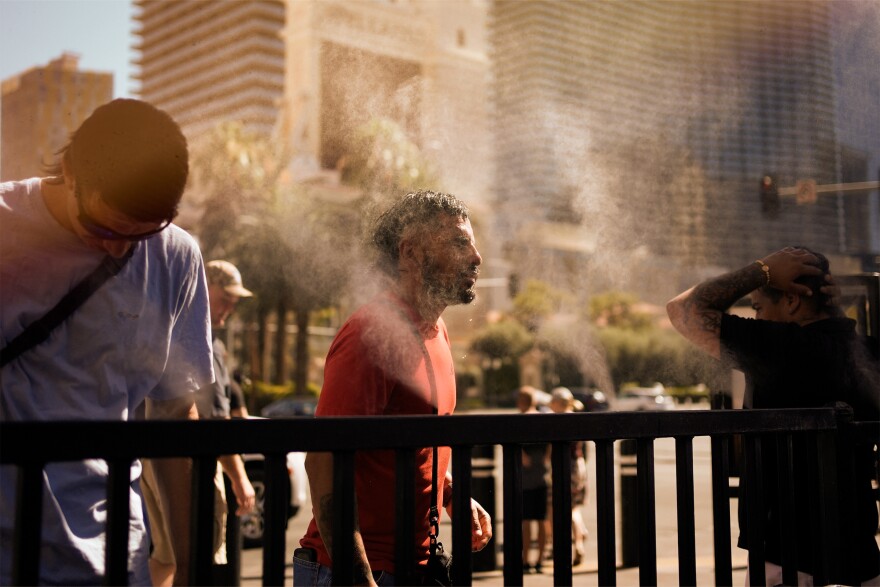Extreme heat — just the mention of the term conjures very specific feelings for all of us who live in the southwest. They range from annoyance to health concerns to the stress of air conditioning bills. Our response is mostly based on how we individually experience heat, our location, and the resources available to us.
But how do communities respond to heat?
When there’s an extreme weather event, a governor can declare an emergency, which then activates provisions of the Stafford Act. Established in the 1970s — and since updated — it was designed to provide a systematic way for the federal government to provide financial and other assistance to state and local governments. Examples of this include activating the American Red Cross, the National Guard, or the Federal Emergency Management Agency.
The Stafford Act specifies natural disasters like floods and hurricanes, but heat is not included.
The system starts with advisories or warnings. The local weather service, a division of National Oceanic and Atmospheric Administration, issues advisories, watches and warnings. These are determined by a “heat risk” scale, says Dan Berc, a Warning Coordinator Meteorologist with the Las Vegas National Weather Service. It’s an established scale from zero to four, with four signifying extreme heat.
Local municipalities typically respond to heat warnings by activating cooling centers. These are typically public locations, like libraries and community centers.
The Nevada Heat Lab, housed at the Desert Research Institute, conducted a study on cooling centers. It showed how municipalities have created a cooperative network of resources to respond to extreme heat. But it also discussed current limitations. For example, many centers are only open certain hours, making it a challenge to access during evenings, weekends, and holidays.
Ariel Choinard, who leads the Nevada Heat Lab, points out that some venues like libraries don’t allow people to lie down, making it difficult for people to get the appropriate respite from the heat. Choinard says federal funding could help create and staff 24-hour cooling centers. Keeping them open for the duration of the heat wave would be better than “activating and deactivating,” said Choinard.
The NHL study essentially recommends that cooling stations be “recognized as active components to public health rather than as passive amenities.”
Lawmakers have introduced bills to include heat as an official emergency. Data shows more deaths are due to heat than any other weather-related condition. The number of heat-related deaths more than doubled from 1999 to 2023, according to a 2024 study published in the Journal of the American Medical Association.
In Maricopa County, Arizona, nearly 600 people died from heat-related causes in 2024. That same year, over 500 died due to the heat in Clark County, Nevada. According to federal health statistics, heat-related deaths are the highest in Arizona, California, Nevada, and Texas.
Guests: Dan Berc, warning coordinator meteorologist, Las Vegas National Weather Service; Ariel Choinard, lead, Nevada Heat Lab.






